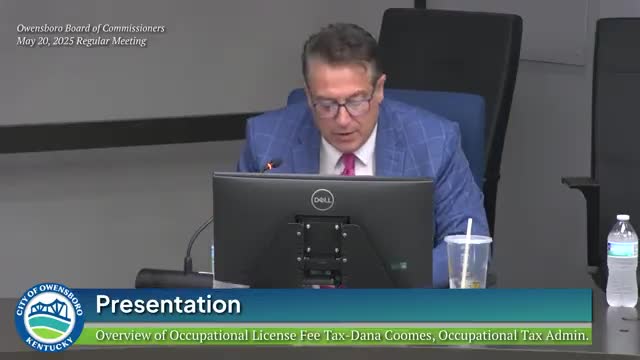Owensboro officials clarify property tax distribution between city and schools
May 20, 2025 | Owensboro City, Daviess County, Kentucky
Thanks to Scribe from Workplace AI , all articles about Kentucky are free for you to enjoy throughout 2025!

This article was created by AI using a video recording of the meeting. It summarizes the key points discussed, but for full details and context, please refer to the video of the full meeting. Link to Full Meeting
The discussion began with a request for an explanation of property tax, particularly in light of recent reassessments that have led to public complaints. It was noted that the city collects property taxes not only for itself but also for the Owensboro Public School System. A city representative explained that approximately 23% of the property tax bill goes to the city, while the remaining 77% is allocated to the schools. This breakdown is often misunderstood by residents, who tend to blame the city for tax increases without recognizing the school's significant share.
The representative elaborated on the assessment process, indicating that property valuations are conducted by the Property Valuation Administration (PVA) and that properties are assessed every four years, with additional assessments occurring for new sales or large construction projects. The city’s tax rate has reportedly decreased in recent years, which contrasts with the school tax rate, which is about three times higher.
Concerns were raised about the frequency of reassessments, with officials acknowledging that significant changes in property values often occur in large increments rather than gradually over time. This can lead to unexpected spikes in tax bills after years of stable assessments.
Additionally, the meeting highlighted the city’s role in collecting occupational net profit taxes for Daviess County, emphasizing the workload of the tax department staff. The city officials expressed appreciation for their efforts, particularly in recovering funds through audits.
In conclusion, the meeting served to clarify the complexities of property tax assessments and the distribution of tax revenues, aiming to improve public understanding and communication regarding these issues. The city plans to continue efforts to inform residents about the tax structure and the roles of various entities involved in property taxation.
Converted from Owensboro Board of Commissioners Regular Meeting - May 20, 2025 meeting on May 20, 2025
Link to Full Meeting
Comments
View full meeting
This article is based on a recent meeting—watch the full video and explore the complete transcript for deeper insights into the discussion.
View full meeting
